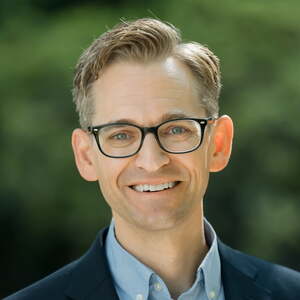
Normally, getting a glimpse of the Great Isaiah Scroll — one of the most important archaeological finds of the past century — would require a plane ride all the way to Jerusalem. But over the past semester, it’s been as easy as a short stroll across Biola’s campus.
Since September, Biola has been exhibiting an exact replica of the famed scroll in the university’s Calvary Chapel, allowing students and community members alike to get a free up-close look at one of the oldest and most celebrated existing records of God’s Word.
The 24-foot-long scroll, which features the entire book of Isaiah written in ancient Hebrew script, has offered visitors the opportunity to gain new appreciation for the Bible that we have today, said Biola professor George Giacumakis, who helped to coordinate the display.
“It gives them a glimpse into the history of the text,” said Giacumakis, who also serves as director of the Museum of Biblical and Sacred Writings in Irvine, Calif. “It shows the importance of the biblical text and also its historicity. Here, we can go back and look at a text that goes back to at least the 2nd century B.C.”
The Great Isaiah Scroll, one of more than 900 documents that make up the Dead Sea Scrolls, is significant in that it is the only complete book of the Bible surviving among the Dead Sea Scrolls. It is also the oldest known copy of Isaiah in existence today, dating back to about 120 years before the coming of Christ.
The replica was created by London-based Facsimile Editions, which placed images from the original onto 17 parchment panels — complete with stains, tears and deteriorated edges — then hand-stitched them together. The copy was recently purchased by Legacy Church of Orange County, whose senior pastor, Scott Moffatt, an adjunct history professor at Biola, worked with Giacumakis to arrange for it to be displayed at the university.
Since its discovery in a cave near Qumran in 1947, the original scroll has darkened and become more difficult to read, Giacumakis said. But because the replica is based on photographs taken shortly after the scroll’s discovery, it’s actually much more legible — making it especially useful for educational purposes, he said.
“It’s far better than what the original looks like now,” he said. “It’s so authentic.”
The presence of the scroll on campus has been useful for several of Biola’s Bible and theology classes, Giacumakis said. Hebrew students, for example, have been able to study the handwritten text as ancient students of Scripture did — a dramatic difference from text that is printed neatly in textbooks. In addition, Giacumakis has been teaching a history class on the Dead Sea Scrolls and their significance.
For student John Dunne (’08, M.A. ’10), the scroll has led him to a greater appreciation for the integrity of the Bible, he said. The scroll is roughly 1,000 years older than any other existing Hebrew copy of Isaiah, and yet the text is overwhelmingly identical — demonstrating that it has been accurately preserved and handed down through the centuries.
“It has been incredible to see the preservation of God’s Word,” said Dunne, who is working on his second master’s degree from Biola’s Talbot School of Theology. “The Great Isaiah Scroll … helps demonstrate the overall reliability of the transmission of the Old Testament.”
Dunne said that getting a chance to study the Dead Sea Scrolls more closely this semester has had a major impact on his aspirations for future academic work.
“I completely altered my original thesis proposal for Ph.D. programs,” he said. “Studying the Dead Sea Scrolls has been so fascinating to me that I would love to enter a program of extended research dealing specifically with the scrolls, likely through a comparison of concepts and terminology from the Pauline epistles.”
Although the exhibit at Biola was scheduled to end in December, Giacumakis said the scroll will continue to be on display in the future through the Museum of Biblical and Sacred Writings. Additional information can be found at sacredwritings.org.
 Biola University
Biola University



